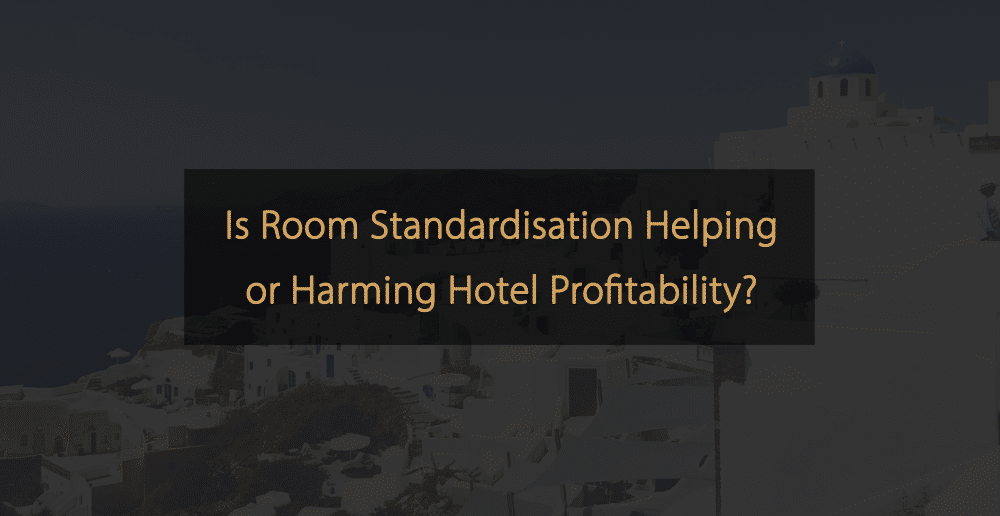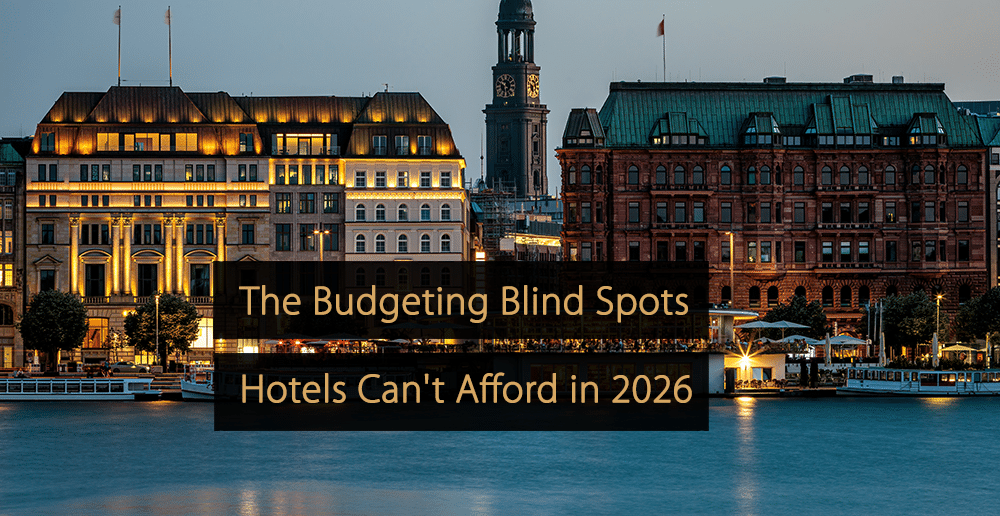For years, revenue management was the commercial heartbeat of hotels: optimizing room rates, forecasting demand, and filling beds efficiently. But the landscape has shifted. Relying solely on RevPAR is like saying you watched a movie after watching the trailer; you may know what it is about, but you miss the full plot. To thrive in a world of rising costs and demanding owner expectations, hotels must embrace total profit management. Profitability is the scoreboard that truly matters.
In this article, you’ll learn how shifting from revenue to profit management helps hotels integrate data, align teams, and build long-term financial resilience.
The Limits of Traditional Revenue Management
Revenue management was born in the age of airline yield management, where the product was simple: one seat, one journey. Hotels borrowed the playbook, applying it to rooms, and it worked. But hotels are not airlines.
A hotel is a complex ecosystem: rooms, F&B outlets, meetings and events, wellness, parking, retail, and more. Traditional revenue management, with its laser focus on room revenue, captures only a fraction of the value a guest brings.
Consider these blind spots:
- Profit leakage: Two guests may pay the same room rate, but one spends hundreds more on spa treatments, dining, and upsells. Revenue management rarely accounts for that difference.
- Cost dynamics: Selling a room at €120 with a €30 acquisition cost is not the same as selling one at €110 with a €5 cost. Yet many hotels still make decisions without factoring in acquisition and distribution costs.
- Cross-department silos: Revenue managers optimize occupancy, while F&B managers chase covers, and sales teams push group business. Each works hard, but not always in harmony, sometimes even at odds with one another.
The result? Optimized revenues, but not necessarily optimized profits.
Why Profitability Is the New Competitive Edge
Investors, owners, and asset managers increasingly care less about RevPAR rankings and more about the bottom line. In times of economic uncertainty and high inflation, profit resilience becomes the benchmark of performance.
Profitability is also a more reliable compass for strategy:
- Owner expectations have changed: With margins under pressure, owners expect every $ to work harder. Hotels that report only on revenues without a profitability context risk losing credibility.
- Diverse guest journeys: Today’s guest is not just a room buyer but a holistic consumer. Their choices affect multiple revenue streams. Profitability analysis reveals where the true value lies.
- Competitive benchmarking has matured: Comparing rates is yesterday’s game. The real differentiation comes from delivering profitable demand and aligning strategy across all departments.
Simply put, profit management is not just about tracking costs. It is about reframing the hotel’s commercial strategy around what creates sustainable value.
What Total Profit Management Looks Like in Practice
Transitioning from revenue to profit management is not about replacing one department with another. It is about aligning the entire commercial strategy around profitability. Here’s what it involves:
1. Integrating Data Across the Hotel
A profit-focused hotel cannot afford data silos. Rooms, F&B, M&E, distribution, and finance must be connected. When decision-makers see the complete picture (revenues, costs, and margins), trade-offs become clear. For example:
- Should you take that group booking with low room rates but high banquet spend?
- Is it worth chasing OTA business if acquisition costs eat up the margin?
Hotel analytics & visualization platforms like Juyo Analytics provide integrated data that can help shift these questions from gut feel to evidence-based decisions.
2. Moving from KPIs to Decision Drivers
Traditional KPIs such as RevPAR or occupancy provide useful snapshots but fall short in guiding profitability. Total profit management introduces new decision drivers:
- Net Revenue
- Net RevPAR (Net Revenue per Available Room)
- TRevPAR (Total Revenue per Available Room)
- Contribution margins by segment and channel
- Total Revenue Multiplier
These metrics connect total revenues to costs and highlight the true profitability of business decisions.
3. Aligning Commercial Teams
Revenue management, sales, marketing, and F&B cannot operate in isolation. Total profit management aligns its strategies toward a common goal. Instead of maximizing departmental numbers, teams optimize for the collective bottom line.
This alignment turns dashboards into a source of focus and confidence in decision-making: one version of the truth for every team.
4. Shifting from Reactive to Prescriptive Strategies
Revenue management has always been reactive: forecast, adjust, repeat. Profit management is more strategic. It tells you not only where to allocate resources but also how to shape demand profitably.
- Predictive analytics can highlight low-margin business before it’s booked.
- Prescriptive insights can guide whether to prioritize corporate contracts, events, or leisure channels.
- Scenario planning enables smarter trade-offs between short-term gains and long-term profitability.
The Cultural Shift Required
The move to total profit management is as much cultural as it is technical. It requires hotels to rethink how they define success and how teams collaborate.
- Success is no longer defined by room revenue growth in isolation; it’s about aligning teams around the collective impact on profit.
- Yesterday’s reports explain what happened; profit management points to what needs to happen next.
This cultural evolution also empowers teams. Finance, operations, and commercial leaders gain confidence to act because they all share one source of truth and a common goal: total profit.
The Competitive Advantage of Profit-Focused Hotels
Hotels that embrace profit management gain a decisive edge:
- They make faster, more confident decisions because data is aligned across functions.
- They unlock new opportunities by understanding the full value of each guest, not just their room spend.
- And most importantly, they future-proof their business.
In a landscape where costs fluctuate, consumer behavior evolves, and competition intensifies, profit is the one constant that matters.
Free Checklist: Start Using Data in Your Hotel’s Decision-Making
Using data to power insights and decisions at your Hotel can position you for commercial success, help increase guest satisfaction, and reduce costs. This checklist provides a starting point for hoteliers new to data analytics in the hotel industry.
Click here to download the checklist “Start Using Data in Your Hotel’s Decision-Making“.
Revenue management professionalized hotel strategy, but looking only at revenue is like staring through a telescope at a single star: you see one detail but miss the constellation. The next era is total profit management, where hotels outpace competitors and build resilient, sustainable futures.
More Tips to Grow Your Business
Revfine.com is the leading knowledge platform for the hospitality and travel industry. Professionals use our insights, strategies, and actionable tips to get inspired, optimize revenue, innovate processes, and improve customer experience.Explore expert advice on management, marketing, revenue management, operations, software, and technology in our dedicated Hotel, Hospitality, and Travel & Tourism categories.








Leave A Comment